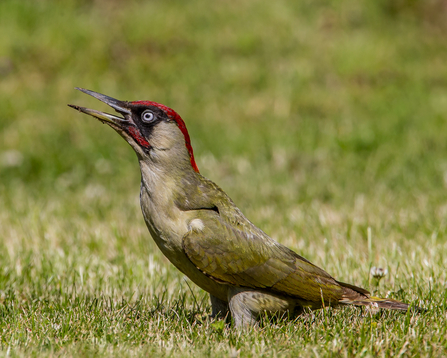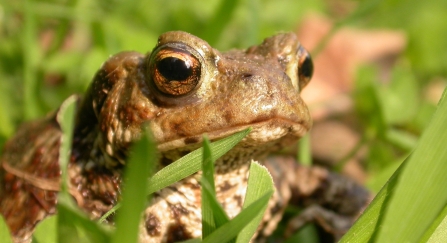
Team Wilder story: How to create more homes for nature in your own garden

Welcome wildlife into your garden and enjoy an endlessly fascinating parade of characters. From industriously buzzing bumblebees to the snuffles and grunts of a hedgehog on the hunt for tasty morsels – Ben invites us to throw open the garden gate to our wild visitors as we seek to grow Team Wilder.
The wildlife in our gardens never fails to surprise. Last summer I had the privilege of watching a green woodpecker vigorously excavating my lawn. I knew exactly what she was after – a protein-rich dinner from one of the anthills that had popped up towards the edge of the lawn. Had I moved the ants on I would never have had the honour of this colourful show.
Experiences such as this are the gardener’s reward for exercising a little restraint, for working alongside nature and inviting wild visitors into the garden with open arms.

©Andy Morffew
It’s amazing how simple tweaks to how we garden can trigger a chain reaction that benefits wildlife right up the food chain. Buoyed by my woodpecker visit and encouraged by campaigns such as No Mow May, this year I finally took the plunge and decided to let the lawn grow a little longer year-round.
The results have delighted: wild flowers like cat’s ear, selfheal and a constellation of daisies create a constantly evolving miniature meadow.
I guess these flowers were always there – they just needed a chance. They in turn attract a myriad of bees, butterflies, hoverflies, and grasshoppers, while frogs seek refuge among the more tussocky patches.

My personal highlight, though, is the toad that’s taken to hanging out in my pair of gardening crocks left outside the back door.
Wildlife will turn up if you give it the opportunity, and we can all do our bit, right at home in our gardens. And these wild visitors bring untold joy, whether watching the avian antics on the bird feeder from the kitchen window or sitting amongst the action on a balmy summer evening as the sun sets and the bats come out to swoop.
Attracting wildlife isn’t hard. Often all it requires is a little less meddling from us! Here are some top tips to put your garden on the map.
Grow a little wilder
Allow a few corners to grow a bit wilder. For example, leave dead stems over winter as shelter for insects to sit out the cold.
A patch of nettles is a great foodplant for caterpillars, while a pile of deadwood serves up opportunities for insects such as the stag beetle and numerous species of fungi. Include purpose-made homes for wild creatures too: nest boxes, hedgehog homes and bug hotels are all welcome.
Make your garden wilder (https://youtu.be/DeeIdYUJRf4)
Make your garden wilder for wildlife
Install a pond
A source of water is one of the very best ways to attract a range of wildlife. It doesn’t need to be a big – a simple preformed pond is great, or even just an old washing up bowl.
Include a shallow slope or rocks as a means of escape and don’t be tempted to add fish, which will devour tadpoles and other pondlife.
Build a garden pond (https://youtu.be/NPwEvxYhfSg)
Create a wildlife pond
Let your garden bloom
Plant plenty of pollen- and nectar-rich flowers as food for pollinators and other garden-friendly bugs. Aim to have something in flower every month of the year, so there’s always something to forage.
Letting an area of lawn grow longer not only encourages more wild flowers but offers shelter for small mammals and another food source for caterpillars.
Create a buzz - flowers for bees and butterflies (https://youtu.be/NJVu4lxksgc)
Create a buzz - flowers for bees and butterflies
Start a compost heap
The secret to any thriving garden is healthy soil alive with earthworms, bugs such as ground beetles, and a universe of microorganisms that help our garden grow.
Compost heaps are a great way to convert old plant matter and kitchen scraps into natural, organic fertiliser that feeds the soil and the life within it. Compost heaps themselves also offer homes for wildlife such as slow worms and grass snakes.
For peat's sake - Go peat free in the garden (https://youtu.be/biMaJSx5TY8)
Go peat free in the garden
Garden organically
Artificial pesticides and weedkillers have no place in a nature-friendly garden. Look for natural ways of controlling pests instead: pest barriers or planting flowers that tempt in pest predators such as lacewings and ladybirds, for example.
Thick mulches of organic matter such as bark chippings or compost will suppress weed growth in vegetable beds and flower borders. Collect more rainwater to quench your plants and, please, ditch the peat.
Natural pest control (https://youtu.be/ztAE-p-CjY0)
Natural pest control

